Using Dried Molasses in the Garden
In a different thread, Jill mentioned hearing an "old-timer" who had converted from chemical methods of gardening to organic gardening talking about using dried molasses. And, it occurred to me, that I probably seldom if ever mention molasses, which is an important soil restorative often used by organic gardeners. So, I thought I'd discuss it a little here.
WHAT ORGANIC GARDENING REALLY IS:
A lot of people call themselves organic gardeners because they don't use pesticides or fertilizers of chemical origin, and only use those of organic origin. That is a good start, but organic gardening is so much more.
Organic gardeners understand that EVERYTHING starts with the soil. Thus, they do many, many things to maintain healthy soil. This includes adding organic materials like compost, rock and mineral powders (like soft rock phosphate, greensand and lava sand), etc. It also includes doing whatever you can to encourage healthy soil that is ALIVE. Soil is not a dead, inert material (well, it can be, if it has been heavily farmed chemically). Good soil is alive and teeming with many, many microorganisms that contribute greatly to soil health. These microorganisms include but are not limited to bacteria (there's good bacteria, you know), fungi, algae, nematodes (there's good nematodes too), protozoa, and actinomycetes If these microorganisms are missing from your soil, your soil is not healthy enough.
Organic gardeners also understand the importance of using green manures (crops you raise in order to till them into the soil where they decompose and add life to the soil) and cover crops.
HOW SOIL "DIES": The use of heavy chemical fertilizers and pesticides kill off many, and sometimes all, of the microorganisms in the soil, essentially leaving sterile soil. If organic material, green manure and cover crops are not used to restore these microorganisms to the soil, you essential have dead, inert soil. Obviously, dead and insert soil doesn't help plants grow. So, if you use chemicals on your soil and don't do anything to correct the damage they do, you find yourself in an escalting cycle of having to use more and more chemical fertilizers and pesticides to make up for what is lacking in the soil.
HOW TO BRING YOUR SOIL BACK TO LIFE: All those microorganisms have to eat. So, you have to put stuff into the soil that they can eat/digest, and that is where all those organic materials come in. When you add compost and other natural materials like the various mulch materials that break down, you are adding "food" to the soil that will benefit both your plants and the soil's microorganisms.
DRIED MOLASSES is an organic product that has quietly gained quite a following. You might remember seeing liquid molasses on the syrup aisle at the grocery store. You can use that form of molasses in different spray formulations (like Garrett Juice) for your garden.
You can use dried molasses to add carbohydrates to your soil to feed soil microorganisms. Molasses also contains sulphur, potash and a variety of micronutrients (trace elements) needed by plants. Technically, the N-P-K ratio of molasses is 1-0-5 One thing that dried molasses adds to the soil is carbon, which is essential for growth. You HAVE to have carbon in order to have healthy microorganisms in your soil, and carbon is the main energy source in soil.....but we seldom talk about adding carbon to our soil, do we? Dried molasses also adds potassium or potash to your soil. Why is this important? Potassium helps our plants maintain a good balance between root growth and top (leafy) growth. Potassium also is VERY important in ensuring plants have adequate hardiness (in both winter and summer). If your soil is low in potassium, you often have problems with disease, winter-kill of plants that are supposed to be winter-hardy and may find your perennials often are not perennial.
HOW TO ADD DRIED MOLASSES AND HOW MUCH TO ADD:
If you are building or renewing beds, you should add dry molasses at a rate of 1/2 lb. for every 100 square feet. If you can't find dry molasses locally, you can substitute ordinary sugar. Just sprinkle it evenly by hand over the area you want to cover.
If you like to brew your own compost tea, you can add 1 to 2 oz. of dry or liquid molasses to each bucket or batch of tea you brew. (Sherri and I use Garret Juice which is an enhanced form of compost tea that includes molasses as one of its' ingredients.)
Molasses is also an important tool in the battle against fire ants and other soil-borne pests. Why? Fire ants prefer sterile soil where there aren't any microorganisms to attack them in any stage of their life cycle. By adding molasses to your soil, you are encouraging microorganisms and discouraging fire ants. Now, adding molasses to your soil today WILL NOT mean that the fire ants are all gone tomorrow, but it does work long-term as healthier soil means less fire ants. IF you find fire ants or other ants in your compost pile, throw in a handful of molasses every now and then to increase microbial activity in the pile.
Because molasses increases microbial life, it is a great "compost starter" and you can just throw a handful of it on the compost now and then instead of purchasing those more expensive "compost starters" that you see in stores.
MOLASSES HELPS COMBAT THE BAD NEMATODES: If you garden in sandy soil or sandy loam that has a high percentage of sand and a low percentage of organic material, one way to help combat root-knot nematodes is to add molasses to your soil. The increased microbial activity will help reduce the population of root-knot nematodes as will the addition of more organic material. Again, this is a long-term strategy, not a quick fix.
MOLASSES HELPS COMBAT GRUB WORMS: When we moved here, we had a problem every single night with armadillos and skunks digging up our lawn, our garden beds, etc. looking for grub worms. The first spring, they absolutely dug up every single plant in my garden looking for grubs....and they did it on the night before Mother's Day. So, when I went outside to the garden that morning, I found every single plant lying on the ground. Every single plant. We still refer to that day as the Mother's Day Massacre. And, we spent the next two days building a fence so I could start over with new plants and seeds.
Of course, I needed a better long-term strategy and soil-building was the answer. After nine years of building and enriching the soil, I can honestly say that our armadillo problem is maybe 2% of what it used to be, and most of that damage is in a narrow band of sandy soil that runs bewteen the house and the garden. It is MUCH harder to improve sandy soil here because "heat eats compost", so no matter how much I add, it always needs more, more, more. Adding both molasses to the soil and milky spore powder have greatly helped with the grub problem, and fewer grubs means fewer beetles.
If you want to add dry molasses to your soil to help combat pests like grub worms or root-knot nematodes, simply spread it on the soil surface at the rate of about 5 to 10 lbs. per 1,000 s.f. of lawn or garden bed. You can water it in immediately, or let rain water it in for you.
USING MOLASSES TO KILL PROBLEM GRASSES AND WEEDS: There are some weeds that are almost impossible to dig by hand, especially in hard clay or rocky soil. Dallis grass is one of them. To help kill Dallis grass and other similar grasses, first spray it with a vinegar product (10% or 20% is best). Then, come back a few days later and scatter a handful of dried molasses all over the crown of the plant. The microbial action stirred up by the molasses will help rot the crown of the grass clump, and you can dig it and the roots out at your convenience. (Dead crowns/roots are a lot easier to dig out than living ones.)
GARDEN-VILLE is an organic product company, founded by Malcom Beck, that has several products that contain molasses. (Mr. Beck's gardening books, too, are incredibly wonderful, by the way.)
For example, Garden-ville's soil food has many wonderful organic ingredients, including molasses, blood meal, alfalfa meal, cottonseed meal, etc.
The Gardenville Fire Ant product has molasses in it, as well as compost tea (or manure tea, I don't remember which), and citrus oil.
GARRETT JUICE can be purchased commercially as a concentrate you dilute before use, or you can mix up your own. It contains compost tea, apple cider vinegar, molasses and liquid seaweed. The very first time I bought dried molasses, it was so I could use it to make my own Garrett Juice.
USING MOLASSES AS PART OF HOWARD GARRETT'S "SICK TREE TREATMENT": Often when a tree that "ought to" grow well here is having problems, it is because the tree is growing in unhealthy soil that is lacking in both organic material and microbial life. Howard Garrett has developed a sick tree treatment that can be used to save sick trees. You can see it at his website....www.dirtdoctor.com. Once there, do a search for sick tree treatment and you'll find it. Dried molasses is just one part of the sick tree treatment.
HOW OFTEN TO ADD DRIED MOLASSES: In most cases, you only have to add dried molasses once a year. If you have really unhealthy soil that seems to be completely lacking in microbial material, you might want to add it twice the first year. I think it would be impossible to add too much, but remember that in healthy soil you want BALANCED soil, so adding too much molasses could add more carbon than your soil needs and could cause it to be out of balance.
So, there, that is everything I can think of to say about molasses and its' use in an organic gardening program.
Ooops. Wait, I have one more thing to add. Grasshoppers LOVE molasses. So, if you find yourself with an invasion of grasshoppers, take either jars or buckets and fill them halfway full with water. (I like to use old quart jars.) Add a teaspoon or two of liquid molasses to the jars and place them around your garden where the grasshopppers can find them. The grasshoppers go into the jars to "eat" the molasses and then drown. Once again, this is not an instant kill method of grasshopper control, but over a period of time, quite a few of them will die. You have to scoop out the dead ones periodically, though, or the living ones get smart and avoid the jars.
Molasses, dried or wet, can be a very useful gardening tool. And, if you can't find dried molasses, you can use ordinary sugar in the same amounts.
Dawn
Comments (22)
goneriding
15 years agolast modified: 9 years agoOnce again, Dawn, thank you for the thorough information. I have ordered the dried molasses from our local feed store - they are replenishing their supply tomorrow and have added this to their list. I look forward to applying the techniques noted above. Any other tips prior to utilization? My hand should be healed enough that I can finish building my compost bin tomorrow as well, I will be wearing my leather gloves this time :-).
Thanks again and have a good evening,
Renee
ilene_in_neok
15 years agolast modified: 9 years agoOnce again, store managers have looked at me like I'm off my rocker. First, no one in Bartlesville knows what diatomaceous earth is. Now this.
Atwoods people finally told me that they buy horse feed and cattle feed that has the dried molasses already mixed in. I didn't ask what the price was, but would the feed itself make a good soil amendment? I didn't think about asking them if they would order some for me. They suggested I try the feed store in Caney, KS, as they didn't believe anybody in Bartlesville or Dewey would carry it.
I'm kinda confused about a couple things, though, Dawn, so if you'll help me out here...
You mentioned that plain sugar could be a substitute for dried molasses. But you also mention that some of the beneficial substances in the dried molasses is sulphur, potash and carbon. So I'm guessing none of these are present in plain sugar? Will the sugar still allow the microbial action to start without having sulphur, potash and carbon?
I'm also curious about the ant thing. I know that, if I spill a little sugar, or anything that has sugar in it, on the counter and don't clean it up, I've got a trail of ants surrounding it within minutes. So if I throw sugar out there on the garden, won't every ant in that city park be attracted to it? That's a scarey thought. As it is, there are several spots in my raised beds where they swarm me. I don't think they're fire ants, but they do bite. --Ilene
Related Professionals
New Bedford Landscape Architects & Landscape Designers · Deer Park Landscape Architects & Landscape Designers · Glendora Landscape Architects & Landscape Designers · Wheeling Landscape Architects & Landscape Designers · Peabody Landscape Contractors · Tempe Landscape Contractors · Flagstaff Landscape Contractors · Gloucester Landscape Contractors · Pleasanton Landscape Contractors · Porterville Landscape Contractors · Eastlake Landscape Contractors · Bonita Decks, Patios & Outdoor Enclosures · Grand Rapids Decks, Patios & Outdoor Enclosures · Salisbury Decks, Patios & Outdoor Enclosures · Shirley Decks, Patios & Outdoor EnclosuresOkiedawn OK Zone 7
Original Author15 years agolast modified: 9 years agoIlene,
I have been organic so long that I am used to people looking at me like I am nuts. I still get my dried molasses in Texas, because I've never found it here.
Sugar DOES have carbon in it, but what is most important is that it has carbs. I think it is the carbs in the dried molasses and sugar that causes the biological activity in the soil that is important. I don't know if the sugar has the potash and sulphur though.
Molasses is a by-product of the process used to turn sugar cane and beets into sugar, so it is closer to sugar in content than you'd think. Of course, I am a Texas girl, born and bred....though now an Okie, and I remember sorghum molasses too from my childhood, which is probably processed the same way, but using sorghum instead of sugar cane.
When I scatter molasses, I do see more ants, but not excessively. If you notice the ants are congregating near areas where you scattered dried molasses or sugar, sprinkle cinnamon in the area and they will soon depart. I think the cinnamon disrupts their ability to follow their own trails.
I've linked a bag of dried molasses.....maybe you'll run across one somewhere.
Dawn
Okiedawn OK Zone 7
Original Author15 years agolast modified: 9 years agoWell, of course I forgot to link the photo of a bag of dried molasses.
I don't know if the kind of molasses sold at feed stores is comparable. The kind of dried molasses sold as an organic amendment is dried molasses sprayed on something like rice hulls as a carrier. I don't know what the feed store molasses is---it might be the same thing for all I know. It probably would be OK to use if nothing odd has been added to it. I do know that the cattle feed molasses comes from the very last processing, so it might be a somewhat lower quality, but I don't know if that matters.
A lof of people buy the cheapest sugar they can find in big bags at warehouse-type stores and use it instead of molasses and feel it works fine.
Some people prefer to buy blackstrap molasses in the 1 gallon jug and put it on/in the soil by diluting it with water and spraying it on with a sprayer.
One of the better fire ant products, by the way, is from Malcomn Beck's Gardenville company, and I believe it is a combination of ingredients which includes compost tea, citrus oil or orange oil, and molasses.
And, if you read the info accompanying the photo below, you will see that this particular company claims molasses repels ants. I don't know if I totally agree with that in the short term as they definitely are attracted by its' sweetness, but in the long-term I think it repels them by increasing microbial action in the soil Ants can't handle soils with lots of microbes, so the better the soil gets....the more scarce the ants.
Dawn
Here is a link that might be useful: Dry Molasses/Ant Repellent
ilene_in_neok
15 years agolast modified: 9 years agoThat was an interesting link. However, at 5# for $14.99 with $9 P&H, if plan sugar will work as well I'd probably be better off trying that.
Since my raised beds are 24x4, then I've got close to 100 sf in each one and so will only need a half pound of sugar for each raised bed, and maybe a pound for my corner herb & flower garden. Since one pound of granulated sugar is 2 cups, that's not really very much to scatter, is it?
Well, I'm gonna try it. LOOK OUT, ANTS, HERE IT COMES!!! Picture it, here I am just as it is clouding up and getting to rain, shaking sugar into my gardens. My neighbors are going by on the sidewalk, just shaking their heads.... "Guess what I saw Ilene doing TODAY????" They'll probably think I'm high or something.... LOL I guess it'll give 'em something to gossip about!
soonergrandmom
15 years agolast modified: 9 years agoIlene - I was in Vinita Atwoods today and I didn't see dried molasses but they had molassas in big bottles.
soonergrandmom
15 years agolast modified: 9 years agoIlene - I think it was with the deer things. The bottle was big, maybe a half gallon.
very_blessed_mom
15 years agolast modified: 9 years agoI've only checked one place, it was Stillwater Milling in Claremore. They called it "powdered" molasses and it was around $8/50# bag. They were out but said they would have more in early next week. There's a couple of other feed stores near me, but I didn't check. I'd just pull out the phonebook and start calling around, surely a feed store near you could order it if you didn't find it. I haven't found big bags of cornmeal yet - they said the closest they had was corn "chips".
I did find diatomaceous earth at Lowes today in the gardening insecticide/pesticide area. Also saw Plant-tone from the Espoma line @ Home Depot. Couldn't find any BT-san diego products though.
Jill
ilene_in_neok
15 years agolast modified: 9 years agoHmmm. Seems like I remember seeing big jugs of molasses at Atwoods last year in the deer stuff. Old penny-pincher me, I was wondering if I would be able to use it in place of regular molasses, in recipes. Molasses normally costs a couple of dollars for a little 8 oz bottle and to me, that's excessive. Of course, what with gas prices, the prices of ALL groceries is getting 'way out of line, and now that the floods have affected the grain harvests in our bread basket, they say that will skyrocket the price of cattle feed and that will mean beef will skyrocket. Scarey news and makes me worry. Then I hear that Kansas farmers have so much grain they can't get it shipped, and I just don't know who to believe. But whether there is a shortage or not, prices will still skyrocket because the public has already been prepared for that and the opportunity to gouge the public once again cannot be missed.
I need to go out next Monday and pick up a few things, I'll stop by Atwood's and Lowe's and take a look. Dewey has a little feed store called "Outlaws". I think I'll stop in there and look around too. Even though Atwood's didn't think Outlaws would have what I want, they really may not be in a position to know.
Okiedawn OK Zone 7
Original Author15 years agolast modified: 9 years agoIlene,
I just think it is really interesting they are marketing molasses as an "ant repellent" because I am not sure if there is really any research that backs up that claim in the short term. I don't even really consider it a long-term ant repellent, just a part of an overall soil improvement process that will eventually ensure you have fewer ants.
Jill,
Ironically, at a time when more and more people are getting into organic gardening, corn gluten meal is getting harder and harder to find. The reason why is not all that shocking though.....ethanol. More and more corn is being diverted from the human food/cattle food/organic gardening production plants and is going only to fuel production. (sigh) Howard Garrett, the Dirt Doctor, has been warning us for a couple of years that corn gluten meal was in the process of becoming so rare that it would become unaffordable and he is (as always) right.
Four or five years ago, I could find corn gluten meal at any nursery that had organic materials and it wasn't at all expensive. Those same places still DO carry it, but the price is way up, and they have a hard time getting enough supply to meet the demand.
I've also noticed that Hen Scratch has less corn in it than it used to. Nowadays, I buy Hen Scratch AND cracked corn, and mix in some of the cracked corn with the hen scratch. I wonder if we'll be able to feed the deer and the wild birds this winter if corn prices continue to escalate.
Dawn
very_blessed_mom
15 years agolast modified: 9 years agoSurprisingly, the Inola Feed Store has 50# bags of corn meal for $7.50. I got to thinking though, there's a lot of corn grown locally and processed there. I remember buying corn for the deer a few years back at a feed store just east of Tulsa that was packaged and grown in Inola, so maybe that's why they carry it. I also remember reading recently about a feed mill in Tulsa that makes dog food, they probably have it there. A long time ago someone I worked with told me he put cheap dog food in the bottom of his tomato holes when planting. He wasn't an organic person; I think he told me he thought it helped keep the plants from drying out while they were getting their roots established. I didn't think that made much sense, but that might have been affected by my overall impression of him : ).
Well next week when I get out and about again I'll gather up what I've found so I can use them before I put in a fall garden. That's assuming we ever dry out, we still have standing water in places and a spongy yard. I've got quite a bit in raised beds that are doing okay though and I didn't loose all that many tomato plants really, at least not yet.
Jill
Okiedawn OK Zone 7
Original Author15 years agolast modified: 9 years agoJill,
That rain and standing water certainly have been an enduring "garden feature" this year, haven't they?
I've heard of people using cheap dog food as fertilizer too. I'm not sure I'm crazy about the idea, though. Remember the whole thing last year with contaminated pet food that killed some pets? I'd hate to find out I had contaminated my soil with bad pet food.
I can't believe we're all getting ready for the fall gardens already....although it is the time of the year when the heat really takes a toll on the plants. Sometimes, in late June, everything looks SO very nice and I think to myself "I don't need a fall garden. This one is doing just fine. I'll just carry these plants over into fall." Of course, that nonsense doesn't last long, because by early July, it is obvious that the heat and the bugs are "winning" and I am ready for a fresh start for the fall.
I'm glad you didn't lose that many tomato plants, by the way. Are you getting close to having ripe ones yet?
Dawn
very_blessed_mom
15 years agolast modified: 9 years agoDawn,
BTW thanks for all the info on how much dried molasses to use, I greatly appreciate it as always. As far as tomatoes, I've had some cherry sun gold, actually my littlest girl (turns 4 next month) beat me to them and informed me they were "yummy". She also brought me a small red one but she couldn't tell me which plant she got it from. I ate it today and it was delicious. I have many large green ones coming on and I think if nothing else all this rainy weather has kept things cool enough to encourage fruit set. At least I'm hoping it did.
My peppers look pretty bad, they must not like excessive moisture. The pumpkin and okra plants rotted and corn isn't going to be worth messing with but on the bright side all of that can be planted for the fall. I can't really tell with the sweet potato vines, they're still with me but haven't grown much. I think my potatoes rotted, the foliage wilted on some of the plants and they virtually died overnight. I'm going to dig them tomorrow and find out. I had a few CPB, but the kids kept them picked pretty well. I still need to get some BT san diego in case they show up somewhere else. Everything else is in a raised bed and holding it's own. I do have to pull the onions and get them drying, hopefully in the next few days.
I was thinking some of the animal feeds if they didn't have any chemicals added might be a possible alternative for those who can't find the corn meal or molasses. I don't know that much about feed though.
Jill
Okiedawn OK Zone 7
Original Author15 years agolast modified: 9 years agoJill,
You're welcome. Dried molasses is one of those things that sounds "odd" until you understand how it works to improve microbial life in the soil, isn't it? I think the molasses sold as a cattle supplement could work as long as you know they haven't addded anything to it that would be bad for your soil or for stuff grown in that soil. From what I understand, when sugar beets or sugar cane are processed to make sugar, sugar is the primary product they're after. So, after they've made the sugar, the leftover syrupy stuff is made into molasses for human consumption and for use in the garden. Then, the lower quality stuff that is left over from that process is turned into cattle feed. Unless something peculiar is added to it for the cattle, I don't know why it wouldn't work to stimulate microbial activity in the soil too.
I'm less certain about the corn meal sold as cattle feed. Do you know if it is labeled as "corn meal" or as
corn gluten meal" because I think it makes a difference. Corn gluten meal is the one used on the soil.How wonderful that you getting some ripe tomatoes! That is when it really feels like summer! And your daughter sounds like she's on the road to becoming a gardener herself! One funny thing about SunGold is that a lot of people who grow it the first time will complain that it doesn't taste that great, and then all of us who grow it every year are saying "What????" After a while, we figured out that a lot of newbies were harvesting it too early....as soon as it went from green to gold and weren't waiting for it to turn that distinctive golden-orange. So, clearly your daughter knew to wait for the Sungolds to get to the "yummy" stage which makes her a pretty smart cookie!
I have tons of tomatoes on the plants, and it is a good thing, because "cool and rainy" are a distant memory here. Since our temps are in the danger zone, and are cranking up even higher this week, I probably won't get much additional fruit set on the plants that produce large tomatoes. If I can keep the cherry, currant, grape and paste types healthy, though, they'll set fruit for months yet.
I did a walk-through of every row last night, and I have a handful of plants that look really bad. One of them is Wapisipicon Peach, which has never looked very good--just stayed wispy and wimpy and off-colored the whole time, literally from the day it was transplanted into the garden. It wilted and died over a 3 to 4 day period, so I'll take it out today. Two others that just look really bad and have had early blight for weeks are Caspian Pink and Valena Pink. Both of them are about 5' tall and the early blight has just traveled from bottom to top of the plant very rapidly. I've been trying to baby them along, but think I'll take them out today as they are getting worse and not better. The Valena Pink has two huge tomatoes that must weigh a pound-and-a-half or two. They are some of the largest tomatoes I've ever had on a plant. Those two are far enough along that I can pick them now and I think they will ripen. There are about a half-dozen smaller ones that won't though. Caspian Pink often looks really bad but outgrows the blight most years, but I don't think it will this year.
Considering I have 140 plants, taking out a couple is no big deal. I do everything I can to avoid foliar diseases, except I don't spray with a fungicide as a preventive measure, and this is actually the best year ever. Usually I have blight on quite a few of them, so only having a bad case of it on three of them is not too bad. Long ago, I had to give up on the idea of having "beautiful" plants and settle for plants that produce ripe tomatoes! However, this year a lot of them do look pretty beautiful. I guess it is hard for early blight to grow and spread when there is no moisture. : )
Keep looking on the bright side.....because the weather has been wicked this year and you can't let it get you down. I am sorry you aren't going to have a good spring corn crop. Mine went in so late due to the late freezes that I don't know if I am going to get good ears or not. The corn itself looks great and has just tasseled, but with these high temperatures, the pollen may be sterile. I guess time will tell. Sorry about your pumpkins and okra too.....thank God for the fall garden! For fall corn, I think I am going to grow shoepeg corn ("Country Gentleman") because it is DH's and DS's favorite corn. I have "Seredipity" for spring corn and will just keep my fingers crossed that it pollinates before the heat gets too bad. M okra is making a slow recovery from being nibbled to the ground by the deer. About 8 plants came back although the others died. I should get okra from those 8, but have replanted more to replace the ones that didn't survive.
One thing about fall gardening that I love (other than the fact that we get a "second chance" with crops that underperformed) is that a lot of the pests' life cycles are geared towards spring and summer crops. I never have as much of a pest problem on fall crops as on spring ones.
And, now that I have a fence that truly seems to be deer-proof, I can grow more cool-season crops in the fall. Our deer have always preferred all the cool-season crops to the warm-season ones, especially cabbage and broccoli.Sweet potatoes love heat, so maybe it has been too cool for them to grow and maybe they will kick into gear now that more summer heat has arrived.
With all the rain some of you have had, especially in your part of the state, I am amazed you have any garden left at all. I remember last year when my garden stayed wet for weeks and weeks, and even in the raised beds the moisture levels stayed incredibly high, and everything suffered greatly. To think y'all are having that kind of mositure again is mind-boggling.
It is hard (but not impossible) to give peppers too much moisure (or soil that is too rich). Are your peppers off-color and dropping leaves? That probably would be too much moisture OR a nitrogen deficiency because the water-clogged roots can't take up nutrients because they are so full of water. If your tomatoes and peppers are in beds with identical drainage, the peppers "ought to" thrive if the tomatoes are thriving. Of course, your tomato plants probably are much larger than the pepper plants, so they can and do use more moisture. So, thinking about it in those terms, I can see why the peppers might be suffering.
Last year I just kept my peppers in containers all summer and had a really good harvest and I don't think they would have done well here in last year's moisture.Too hot and dry....too cool and wet....too much this, and too little that. I'd like to have one year, just one year, with AVERAGE temperatures and AVERAGE rainfall. Instead, we seem to swing from one extreme to another, which IS (unfortunately) normal for us. At least we aren't in poor, flooded Iowa or in the San Francisco area where they are having temps in the 100s to 110s instead of their usual 70s and low 80s. A lot of California gardeners on the Tomato Forum have been begging for "hot weather plant tips" and, as you know from living here, there's not a lot you can do about the heat except hope it cools off. Our weather may be odd, but it still is pretty much what we and our gardens are used to having.
Dawn
goneriding
15 years agolast modified: 9 years agoHello all:
I just got my big bag of Kandy Kid dried Molasses, which Big V feed sells. I am off to add it to my soil as there are grub worms in the area. Does it help kill other pests? I have leaf hoppers, Cucumber Beetles, etc.
Thanks for the great post.
Renee
Okiedawn OK Zone 7
Original Author15 years agolast modified: 9 years agoRenee,
It helps kill all kinds of pests in the sense that it increases microbial action in the soil. Those microorganisms take many forms and include fungi, bacteria, viruses, protozoa, algae, actinomycetes, nematodes. (There are GOOD nematodes that are beneficial insects as well as bad nematodes like root knot nematodes.) Not all of the microbes in healthy soil have been analyzed and studied--but there are roughly 50 billion microbes in 1 tablespoon of HEALTHY soil. That translates, according to Howard Garrett, to about 900 BILLION microbes in a pound of soil. Their basic job is to break down organic material into organic matter first and then into the basic elements, which is the process known as mineralization. These microorganisms and their activities are what give you "healthy, living soil" and plants grown in healthy soil better resist pests than plants grown in sterile, unhealthy soil.
The specific organic treatment for grubs is to treat the soil with beneficial nematodes and milky spore powder. We used them for the first couple of years while we were simultaneously working to improve our soil. With our yard, I have seen a gradual decrease in grubs every year--both in the lawn areas and the flower and veggie beds. As our organic program continues and our soil gets healthier, we have fewer and fewer grubs. This is VERY important to us, because the first two or three years, our lawn and garden were CONSTANTLY torn up by armadilloes and skunks digging for grubs and I was afraid we'd have to deal with them for the rest of our lives. Now, our lawn damage from those critters is less than 5% of what it was the first couple of years here.
For cucumber beetles, I don't know what the solution really is other than to encourage beneficial insects. In another thread later today, I'll write about a strange phenomenon I've observed first-hand.....and it involves using pesticides and having MORE damaging insects instead of fewer. I have observed this phenomenon for about 20 years or so, but only recently learned it had been studied by scientists and has a name. Who knew?
Dawn
MariposaTraicionera
15 years agolast modified: 9 years agoDawn, I am so glad I stumbled up this post. I had no idea what organic gardening entailed.
Never heard of Molasses being used in soil. We have problems with ants (they even enter the kitchen), so I shuddered at the thought of what sugar or molasses would do. Glad to hear about the Cinnamon. Is it regular Cinnamon powder that you use to deter ants?
Okiedawn OK Zone 7
Original Author15 years agolast modified: 9 years agoMariposa,
Yes, it is real, ordinary cinnamon. If, by chance, you shop at one of the big warehouse type stores, like Sam's or CostCo or BJ's or Price Club (I shop at Sam's and CostCo), you can get a HUGE container of cinnamon for only a couple of dollars more than you'd spend on a small jar of cinnamon on the spice/baking row at a regular grocery store.
Ants follow some sort of hormone or scent trail left by one another. For some reason, the cinnamon prevents them from being able to follow that trail. So, cinnamon alone often keeps the ants out of the house.
Another way to disrupt the ant's trails without harming them (ants are beneficial in several ways--at least when they stay OUTSIDE) is to spray a water/soap mixture on their path. Here's an example. Obviously, I am outside in the yard and garden ALL the time. One year, a bed of red harvester ants popped up on my neighbor's property just a few feet from our outside water hydrant. They then made a trail into our property and that trail passed within a couple of inches of our water hydrant. So, every time I was hooking up a hose to the spigot, or turning the water on or off, I was standing in the ant's path and they were responding by climbing up on my shoes and biting my ankles or legs. I mixed a couple of tablespoons of Dr. Bronner's Liquid Peppermint Soap with a gallon of water and sprayed that entire ant trail. I sprayed in the evening when no ants were on it. They never traveled that trail again. I had to reapply the soap a couple of times that summer, after heavy rainfalls, but the "problem" ants had been handled in a nice, non-toxic way. Dr. Bronner's soaps are WONDERFUL. I buy mine at a health food store, and you can also order them online.
For ants in the kitchen, you can buy those little round, flat containers that slide up under the refrigerator or stove or wherever (where small dogs and cats and children can't reach them). I guess they aren't organic, but they certainly are effective and I HATE having ants in the kitchen. Actually, I think that some of those ant traps (maybe all of them) use borax as the active ingredient, so that is a pretty organic product. You also can make your own, but I just buy them at Wal-Mart. At our Wal-Mart, by the way, those ant traps are NOT in the lawn and garden center. Instead, they are on the end of the laundry detergent row or cleaning row in an area that also had glue traps for mice, wasp and hornet spray and roach and ant products.
I'll link a photo of the little ant traps below.
Dawn
Here is a link that might be useful: Example of Ant Traps or Baits
rickylynn
14 years agolast modified: 9 years agoHi, Everyone!
I'm new to this forum and am very excited to learn about dried molasses for my lawn and garden. We've looked everywhere, locally, for it and no one has been able to help us. One merchant even said we could buy what he already has or go somewhere else. How arrogant, huh?
I've clicked on the link provided by OkieDawn and will order from them. This is such a great solution, I'm shocked that it is so unknown in my area.
I'll let you know what happens after we've had a chance to apply the dried molasses (and cinnamon, of course - LOL) I think I'm going to add some black pepper and hot sauce to the mixture, as well, since that will help to take care of other problems we've been having with grasshoppers and othe critters.
Thanks, again, for the wonderful advice.
elkwc
14 years agolast modified: 9 years agoI didn't read all the posts in this thread. I will add a few suggestions on where to look for molasses. I can buy dry molasses here at the local co-op and also at the Tractor Supply store at Guymon, OK. For the liqiud I buy it at either the co-op or use the black strap I use in the house. I use more liquid myself but that is a personal preference. Dried works good when spreading and then covering with mulch. I'm fortunate that here I can find about anything feed related fairly easy. Jay
claudieboy
12 years agolast modified: 9 years agoWhat is the difference between Dried Molasses and Dry Molasses?
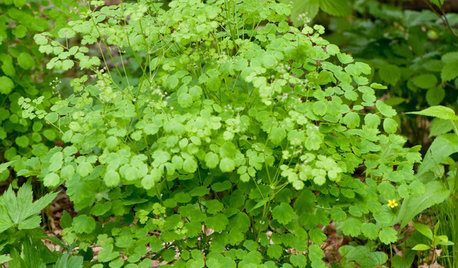
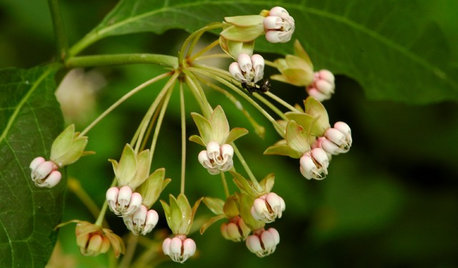


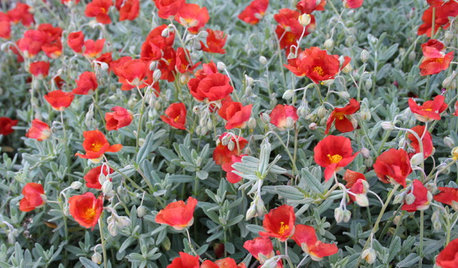
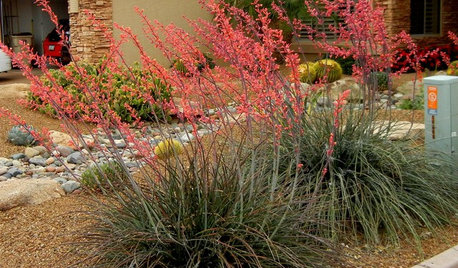
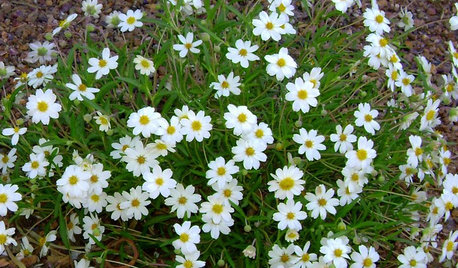
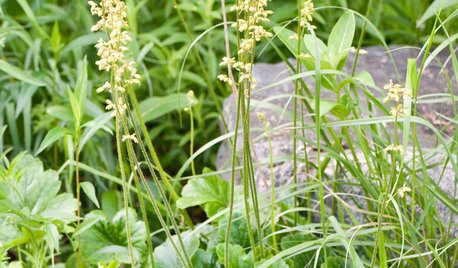
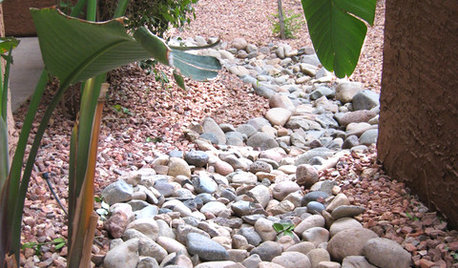
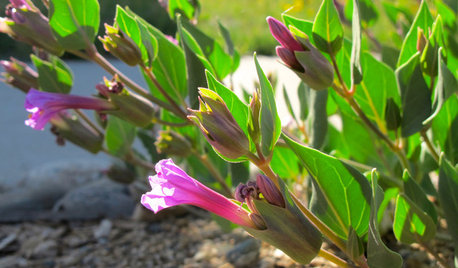







Okiedawn OK Zone 7Original Author